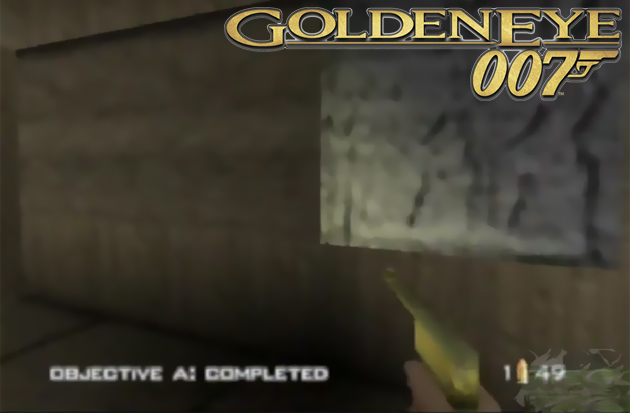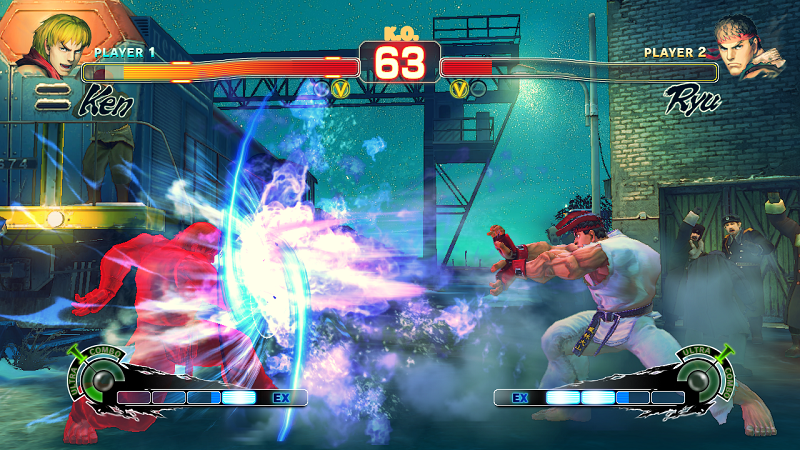Last updated on June 17, 2014
Symmetry and Asymmetry (Part 1)
Is Moderation Good or Bad? (Part 3)
Ultra Street Fighter IV came out last week, once again shifting the balance of this now-six-year-old game. So, has Capcom improved the game with their retrofitted assets, specifically stealing a bunch of stuff from Street Fighter X Tekken, or did they just take a big dump on all of their fans (whew, quite professional scatological humor in play today, ladies and gents!).
Well, I think it’s really too early to say. We know, at the very least, that Ultra fixes the big problem of the previous iteration: the dreaded “vortex”. To explain, certain characters in the game benefited immensely from the set knockdown recovery time of every character in the game. Basically, any knockdown could lead to a series of bad guesses for the opponent getting up, to the point where a single knockdown could be cause for the end of the game. You just keep making bad reactions until you lose – hence, the “vortex” nature of their playstyle.
I note Akuma, Ibuki, and Cammy as particular proponents; Akuma and Ibuki’s air projectiles can make you block high or low depending on when they release them, meaning they can hit you high AND low at the same time, while Cammy’s incredibly easy combos and instant air Cannon Strikes gave hilarious amounts of frame advantage. This made the top tier rather boring, all said! Of course, any character could take advantage of this through safe jumps and ambiguous crossups galore; the top tier just benefits the most.
Obviously, having the majority of the game focus on one knockdown isn’t exactly healthy! For the current moment, it appears they fixed this little problem with the addition of the “delayed wakeup”, which (hopefully) will reduce the dominance of the vortex strategy. However, you never know what fixing one problem will cause, especially in a game with over forty characters; by reducing the power of one thing, you inevitably make other strategies stronger, and maybe not to the degree that you like. Developers can’t forecast the future, nor predict the ingenuity of their fanbase (well, at least the specifics of that ingenuity). Balancing in competitive games is a difficult issue and one with many variables, so let’s take a look at it!
Symmetric and Asymmetric
The first problem in any competitive game balance comes from the variety and limitations of the options presented. Most competitive game fit into two categories: symmetric or asymmetric. Neither of them makes the job easy, but each has its own strange nuances.
Symmetric games involve each and every player holding the exact same set of options to win a game. Most first person shooters with a multiplayer component follow this trend, as well as some strategy games (mostly real-time strategy games with minor differences between factions and, I would say, Civilization/Masters of Orion/others). You might earn additional perks by picking certain things in the game, but it is very much dependent on the game. Most of the time, each and every option will present itself to each player during the game, and that means (theoretically) that each player exists on level playing field.
In Goldeneye, everyone could get the Golden Gun. In Counterstrike, everyone selects from the same pool of weapons and equipment. In Team Fortress, every team needs every class to survive. The general options remain the same in terms of movement and weapons, but everyone picks their own specializations when the game comes to fruition.
Therefore, much of the balance in symmetric competitive game revolves around the strength of those abilities and the design of the maps/environments. Some options will simply prove stronger over time, and everyone will pick them – this means they need to increase the strength of other options, or decrease the strength of this option in particular. By doing it, it immediately applies to any and all players of the game, and that makes the job quite easy in some respects.
On the other hand, level design means that you force a symmetric design onto it – not exactly the most exciting of locales. Anything other than that approach will certainly lead to some imbalance, from superior sniping positions to an abundance of resources. Random generation evens this out, but could spell the end for a more experienced player even if they know more about the game (a bad starting position in Civilization can kill you, no doubt about that). Of course, that also means the solution is easy, if a bit boring.
Asymmetric games, on the other hand, present players with disparate options with only a few shared system tools between them. Fighting games are the most representative among these (and perhaps multiplayer online battle arena games, though I sorta hesitate to put them in this category – so many characters means lots of aesthetic choice and a ton of overlap), given that characters perform vastly different and have quite different strategies and goals. You share basic abilities, but even those basics (such as normal moves) retain entirely different properties and speeds.
A Fierce Punch from Cammy will look vastly different than one from E. Honda, for example, and that goes for a whole cast. Some characters go for a long-range defense game, while others fight in-close with various options for mixing the opponent’s brain up. No characters share the exact offensive options, even as they function under the same set of common systems. That means that combat requires knowing both your options, your opponent’s options, and their mindset – much more comes into play than a simple “I am better at head-shotting you”, simply due to the increase in variables you must control.
At the same time, this presents the further problem of balancing based on a huge roster of characters or exclusive abilities. What is strong could change quickly just through even minor frame data changes, and the board will always shift. Asymmetric games, as per the name, will never balance out in a 1:1 ratio between players; much of it comes down to skill and player preference, although tier lists tell you which characters will always have the most options if all other things remain equal (that’s the purpose, not “this character is always the best, even if I am terrible”). That means asymmetric balancing sacrifices a complete balance for something far more interesting, and in the case of good games the trade-off usually works in the favor of “fun” first and foremost.
That isn’t to say either approach is wrong, but it depends on what you want in a game of competitive fervor. If you want a completely balanced game, as much as human beings can balance something, then asymmetric games may be more your bag. If you want a ton of interesting options even at the expense of a “pure” competitive game, then asymmetric games will definitely appeal more. There are variations and games that fit in-between, but it’s a safe bet to categorize most games in one spot or another,


